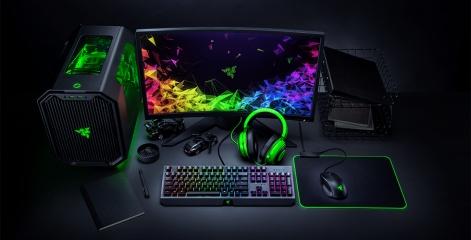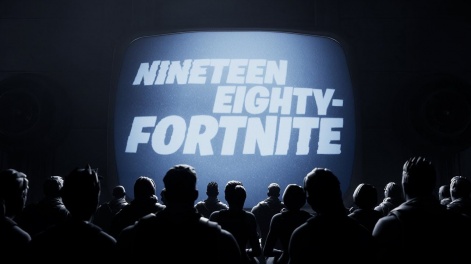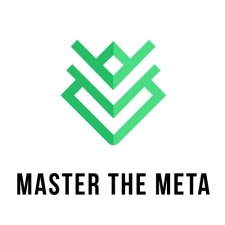Master the Meta is a free newsletter focused on analysing the business strategy of the gaming industry. MTM and PG.biz have partnered on a weekly column to not only bring you industry moving news, but also short analyses on each. To check out this week's full edition, visit www.masterthemeta.com!
#1: Razer's game plan is more ambitious than you think
Like many people, I originally assumed that Razer is little more than your typical gaming peripherals seller. While, yes, Razer's main business is still hardware, the company has done a great job leveraging its audience to sell additional software, services, and even fintech offerings.

15% of Razer's business is now non-hardware, which is ultimately higher margin and growing significantly faster. Here's a brief breakdown of Razer's first half:
- Hardware revenue rose 26% YoY to $383 million. This is mainly peripherals — like mice, keyboards, headsets, cameras, mics — which accelerated while everyone stayed at home, and Razer's new Blade laptop series sold relatively well.
- Razer's total user accounts surged 42% to ~100 million.
- Services revenue jumped 79% to $64 million (~15% of sales), and this segment represented ~30% of gross profits. This segment includes Razer Gold, their virtual credit platform that saw total payment volume (TPV) spike 126%, and Razer Fintech. The latter segment is an emerging offline-to-online (O2O) payments network in SE Asia that's comprised of Razer Merchant Services (B2B) and Razer Pay (B2C). Razer Fintech's TPV rose 114% YoY as both new merchants and consumers joined, and the company applied for a Full Digital Bank License in Singapore. That shows us that the company has much bigger aspirations for the types of financial services it will be able to offer.
- The company maintains a rock solid balance sheet: nearly one third of the company's market cap is in net-cash. And even though profit margins aren't high, the company's command of its cash conversion cycle leaves me impressed.
- Razer is also targeting growth initiatives related to mobile (Razer Cortex Mobile, a game recommendation app) and cloud gaming (via selling mobile gaming peripherals). These avenues are negligible today, but it's good to see the company is thinking about it.
I never would've guessed that Razer would turn its peripherals business into a much larger ecosystem with a vision that spans other industries, but here we are. There are still big risks that come from being reliant on hardware sales cycles, but I'm impressed.
Current momentum means that the hardware business has room to expand and attain higher margins, which is critical. And the ongoing leap in non-hardware business should help maintain revenue growth and margin expansion for longer than many people seem to recognize.
The services segment is still relatively nascent in the big scheme of things, so there's still much to prove and build, but I walk away from this exercise far more intrigued by Razer than when I started. At minimum, it'll be a fun story to follow.
#2: Apple terminated Epic's developer account

The battle between Apple and Epic Games continues to rage on. There's no need to rehash every point again (yes, Apple is acting anticompetitively; and yes, Epic is pulling a stunt that hopefully leads to policy changes), but it's interesting to see how the companies' tactics are playing out.
After Epic decided to defy Apple's mandate and push their "Nineteen Eight Fortnite" campaign, Apple retaliated by threatening to pull Unreal Engine's access to iOS and terminate Epic's developer account. Fortunately, the court decided to block Apple's retaliation against Unreal; after all, tons of non-Epic developers who don't break App Store rules rely on Unreal and Apple for their livelihoods.
However, since Epic decided to openly defy Apple, it is in Apple's capacity to terminate Epic's developer account altogether. And now they have. As of Friday, none of Epic's apps are available for update or download anywhere in the world on iOS.
It's also funny to see the passive aggressive tactics like Apple promoting PUBG Mobile (another popular battle royale) at the top of its App Store and Tim Sweeney "celebrating" about how it runs on Epic's Unreal Engine.
It's now time for court. The first hearing between these two companies should take place toward the end of September. These legal battles can take months to play out, and independent investigations and rulings from other bodies like the EU can add commotion as well.
Again, it's hard to know how exactly this case will pan out — app store policies are complex and assessing modern day antitrust issues necessitates a new lens — but in the long-run it's hard to see how Apple maintains this level of control. Regulation is coming. As I mentioned last week, it's just a matter of when.
#3: Digging into Take-Two's acquisition of Playdots

Take-Two is spending $192 million — $90 million in cash, $102 million in stock — to acquire Playdots, a relatively successful casual mobile gaming studio. Two Dots is the studio's most successful game, having been dowloaded approximately 80 million times.
At a high level, I don't understand this acquisition. It's a great outcome for the Playdots team, but I'm not sure how Take-Two is thinking about it. Yes, we know that Take-Two wants to increase its mobile exposure, because its Social Point + mobile sports apps still represent less than 10% of revenue, but what's the strategic play here?
I don't see any "synergies," any plan to strengthen a cohesive mobile division, or any team that can help bring Take-Two's other IP to mobile. If the reason is as simple as "good studio at a good price" that's cool, I guess, since this deal only eats up ~4% of the company's cash, but I'd hope for more.
I could very well be wrong, but I'm personally not sold that Take-Two got a great price, because 1) it's hard to tell what longevity Two Dots will have and 2) it doesn't appear that Playdots has a new major hit in the pipeline. But either way, there's limited risk for Take-Two if the company overpaid. It's a rounding error.
That said, now that the company has acquired two independent mobile studios — Social Point and Playdots — I want to learn how Take-Two envisions organizing its internal mobile efforts. There's power in providing autonomy and separation, but there's also upside in ensuring the business is structured in a way that won't stifle any important mobile efforts. At what point should Take-Two appoint a Head of Mobile like EA recently did, for example?
It's probably not critical yet, but if Take-Two is serious about expanding its mobile footprint and strikes even more deals (or even reinvests more heavily into internal mobile efforts), structure and leadership become more important pieces to solve for.
Master the Meta is a newsletter focused on analysing the business strategy of the gaming industry. It is run by Aaron Bush and Abhimanyu Kumar. To read this week's entire meta, visit www.masterthemeta.com!





















